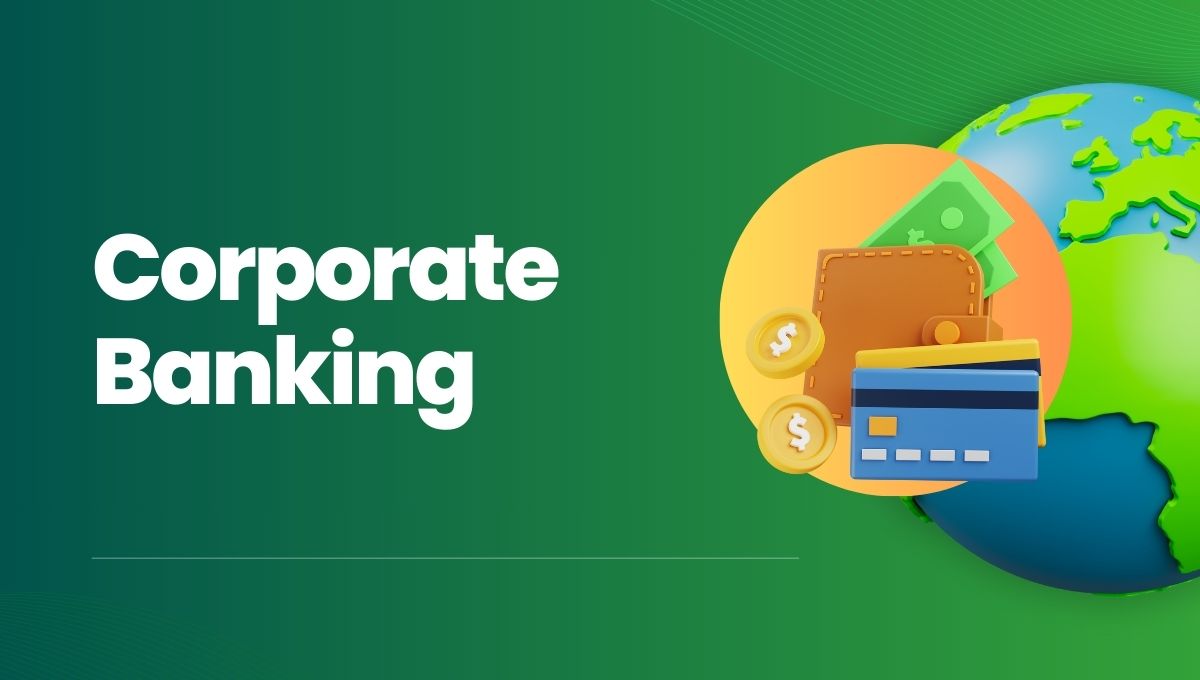Corporate banking is one of the dominant sectors of the entire financial ecosystem, primarily for those big businesses and corporations that need customized financial services. Though most often confused with commercial banking, corporate banking is differentiated in several ways and attends to a niche market. For executives, in particular, who wish to transition to senior roles, it is important to understand this difference so that the proper business strategy can be evolved and implemented.
In this article, we’ll dive deeper into Corporate Banking, core functions, and how they are different from commercial banking. We will also highlight the reasons why understanding such services is valuable, especially to the executives looking to enrich their financial acumen. This guide is for those seeking knowledge on the differences between corporate and commercial banking and on financial services for large-scale organizations.
What is Corporate Banking?
Corporate banking, a segment of banking, encompasses financial services rendered by the bank to Corporates, Institutions and Government. It involves anything possible ranging from providing funds for growth enhancing projects, managing inflows and outflows of cash to advising on capital hierarchy through mergers and acquisitions.
Corporate banking services are heavily customized because the kind of financial needs is entirely unique to each client. Many big corporations handle complexity at huge volumes of transactions. These are given specialized support and services by corporate banking professionals.
The Indian economy is multi-faceted and the expansion of the corporation banking sector Is one of the major contributors. As a report published by KPMG states, the corporate banking industry accounts for approximately 70% of all the earnings being made in the banking industry. Thus, this shows how significant corporate banking is. Indian banks like ICICI, HDFC, and SBI have invested greatly on the corporate banking divisions to target this market.
Key Corporate Banking Services
Corporate Banking Services include the following broad offerings:
Loan Syndication: Collecting financial resources from multiple financiers in order to disburse a large loan towards a large project.
Cash Management: Overseeing the operation funds of an organization on a daily basis to assist the organization in overseeing its liquidity.
Treasury Services: Executing currency transactions, reducing exposure to risks, etc. so as to assist the organization in conducting its financial activities worldwide.
Capital Raising and Advisory: Assisting a corporation in experts research and analysis of capital debt or equity issuance, corporate finance and strategic management communications.
Thus, the scale and volume of these services make Corporate Banking Services riskier to manage and more complex to service than personal or small-business banking.
What is Commercial Banking?
Commercial Banking mostly caters to small-to-medium-sized businesses, also called SMEs alongside individual consumers. Under this category of banking, a wider array of services is offered at a lower scale than those that occur in corporate banking. It encompasses basic banking services like corporate loans, deposits, and withdrawal facilities, retail banking, etc. Services for business purposes availed by commercial banks are on a template and hence not so detailed and sophisticated as the ones offered by corporate banks.
Even the Reserve Bank of India has recently brought to notice the massive growth of commercial banks in the present-day era, attributable to innovations in digitization efforts which has greatly enhanced and expanded the commercial banks’ outreach to a huge number of small and medium enterprises all over the nation.
Differences Between Corporate and Commercial Banking
Corporate Banking and Commercial Banking have several functions in common, but they differ in scale, specialty, and client base. Here are some of the major distinctions between corporate and commercial banking:
| Corporate Banking | Commercial Banking |
| Caters to large corporations and government entities. | Primarily serves SMEs and individual clients. |
| Customized financial services like loan syndication, capital raising, and risk management. | Standardized offerings such as loans, deposits, and credit facilities. |
| Higher-value transactions and complex financial instruments. | Lower transaction values with simpler financial products. |
| Services often include treasury and cash management for international transactions. | Basic services with a local focus on domestic financial needs. |
| Relationship managers provide tailored strategies and solutions. | Branch staff or automated services handle most operations. |
Corporate Banking Trends
Corporate Banking is evolving. It is evolving due to technology, regulatory reforms, and clients’ expectations. Some of the notable trends include:
Digital Transformation: As a McKinsey report shows, 70% of corporate banks are making investment in digital tools so that client experience is streamlined. Indian banks are at the forefront of this shift, with the support of many kinds of fintech solutions in order to make strengthen the corporate banking services.
Focus on ESG (Environmental, Social, and Governance): ESG now is given utmost priority, and corporate banks are now assisting clients to harmonize operations along sustainable practices. Green financing, for instance, has now become an essential service offered by corporate banks.
Data Analytics and AI: The corporate banking sector will be enhanced by 30% growth in profits in the year 2025 thanks to advanced data analytics including AI. This is true for India where the banks have started implementing AI based risk management systems and client advisory as well.
The use of the digital tool and data analytics represents this industry-wide effort towards optimizing efficiency, mitigation of risk, and also rich client experience.
Looking Forward: The Future of Corporate and Commercial Banking in India
With the Indian economy growing, Corporate Banking and Commercial Banking are most likely to grow hand-in-hand. Corporate banking would evolve in the same way as commercial banking does, centered around the client’s needs. It will adapt as fintech evolves, resulting in more streamlined services for huge corporations.
The World Bank projects that India’s GDP will grow by 6.5% in the near future, and corporate banking services demand will surely be created when firms require funding to expand their operations. Against this background, the executive with an understanding of Corporate Banking Services and Differences Between Corporate and Commercial Banking will be in a better position to negotiate the complexities of finance.
Conclusion
For executives looking to move up to senior roles in Finance services, knowledge of the Corporate Banking product and, more importantly, its positioning relative to Commercial Banking becomes extremely valuable.
Corporate Banking is as much part of the banking market today as it has ever been, offering complex services to large corporations, while Commercial Banking Overview serves a larger client list, primarily SMEs and individuals. For those who are seeking more structured learning paths, executive program like Imarticus Learning’s IIM Lucknow Courses in Financial Services and Capital Markets offer deeper insights and arm executives with the capabilities that complement their knowledge in corporate banking.



